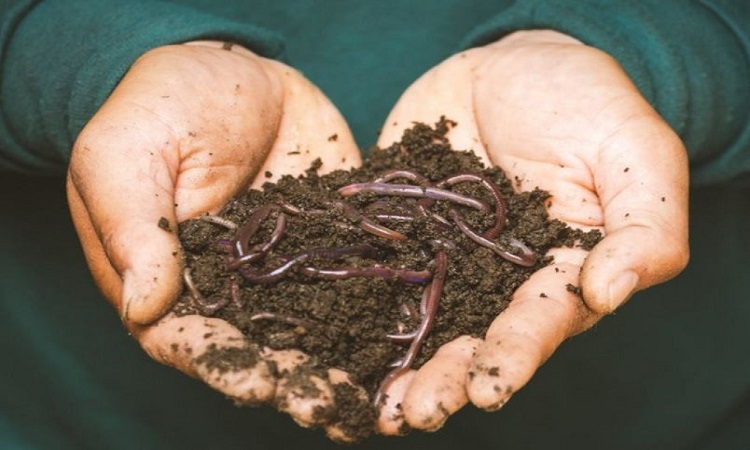Learn how to identify and control destructive black vine weevil using natural, organic methods. Discover effective techniques like cultural control, physical removal, beneficial nematodes, and organic insecticides to protect your plants.
Gardeners and plant lovers, brace yourselves! One of the most frustrating and persistent pests that can wreak havoc on your beloved plants is the black vine weevil. These little beetles may be small, but they can cause significant damage if left unchecked. In this article, we’ll dive deep into understanding these critters, how to identify them, and most importantly, explore effective natural and organic methods to control their population.
What Are Black Vine Weevils?

Black vine weevils (Otiorhynchus sulcatus) are small beetles that measure approximately 1/3 to 1/2 inch in length. As their name suggests, they have a distinct black color and a hard, oval-shaped body. These pests are particularly fond of plants with thick, fleshy root systems, such as rhododendrons, yews, azaleas, and strawberries. You can learn more about their biology and life cycle from this University of California IPM guide.
The adult black vine weevils primarily feed on the leaves of plants, leaving behind characteristic notched edges. However, it’s their larvae, known as root weevils, that pose the most significant threat. These C-shaped, legless grubs feed on the roots and crowns of plants, potentially causing severe damage or even plant death.
How to Identify Black Vine Weevil Infestations

Identifying a black vine weevil infestation early is crucial for effective control. Here are some telltale signs to watch out for:
- Notched Leaf Edges: Adult weevils feed on the leaves, leaving behind characteristic notched or scalloped edges.
- Wilting or Stunted Growth: If the root system is severely damaged by the larvae, plants may appear wilted, stunted, or generally unhealthy.
- Visible Grubs: Carefully inspect the soil around the base of affected plants. You may spot the creamy-white, C-shaped grubs.
- Plant Decline or Death: In severe cases, the root damage caused by the larvae can lead to complete plant decline or death.
Natural and Organic Control Methods

Dealing with black vine weevils doesn’t have to involve harsh chemicals. Here are some effective natural and organic control methods to consider:
- Cultural Control:
- Proper Sanitation: Remove and destroy any fallen leaves, debris, or infested plant material to eliminate potential breeding grounds.
- Barrier Protection: Apply a thick layer of mulch (at least 2-3 inches) around plants to discourage adult weevils from laying eggs.
- Crop Rotation: If possible, rotate your vegetable or fruit crops to disrupt the weevil life cycle.
- Physical Control:
- Hand Picking: Although time-consuming, manually removing adult weevils from plants can help reduce their population.
- Trapping: Set up pitfall traps or use sticky barriers around plants to capture adult weevils. Find trap instructions here.
- Beneficial Nematodes: Introduce beneficial nematodes (microscopic worms) that specifically target and kill the root weevil larvae. Learn more about using nematodes from this Colorado State University guide.
- Biological Control:
- Encourage Natural Predators: Attract birds, beneficial insects (like ground beetles and rove beetles), and other natural predators that feed on black vine weevils and their larvae.
- Use Nematode-Based Products: Apply nematode-based biological control products containing species like Heterorhabditis and Steinernema, which can effectively control root weevil larvae.
- Organic Insecticides:
- Neem Oil: This natural oil can disrupt the life cycle of black vine weevils and deter them from feeding on plants.
- Pyrethrin: Derived from certain chrysanthemum flowers, pyrethrin is an organic insecticide that can effectively control adult weevils.
- Spinosad: A naturally occurring compound produced by soil bacteria, spinosad is effective against both adult weevils and their larvae. The National Pesticide Information Center has more details on spinosad.
Remember, successful control often requires a combination of these methods and consistent monitoring. Persistence is key when dealing with black vine weevil infestations.
Tips for Prevention and Maintenance

Prevention is always better than cure, and there are several steps you can take to discourage black vine weevil infestations:
- Proper Plant Selection: Choose plants that are less susceptible to weevil damage, such as those with fibrous or woody root systems. Check this list of resistant plants.
- Soil Preparation: Ensure adequate drainage and healthy soil conditions, as weevils prefer moist environments.
- Regular Monitoring: Regularly inspect your plants, especially during the weevils’ active seasons (spring and fall), to catch infestations early.
- Avoid Over-Watering: Excessive moisture can create an ideal breeding ground for black vine weevils.
- Maintain Plant Health: Healthy, vigorous plants are better equipped to withstand and recover from weevil damage. Follow these plant care tips.
By incorporating these natural and organic control methods into your gardening routine, you can effectively manage black vine weevil infestations while preserving the health and beauty of your plants.
Pingback: Shampoo Ginger Lily Care: Planting, Growing and Maintenance Guide